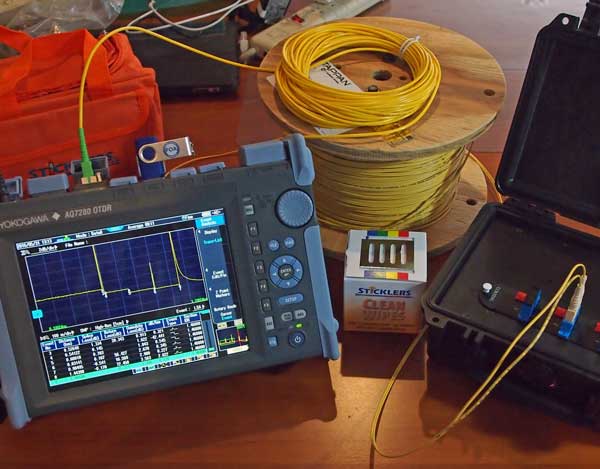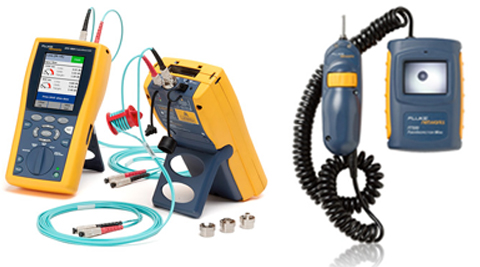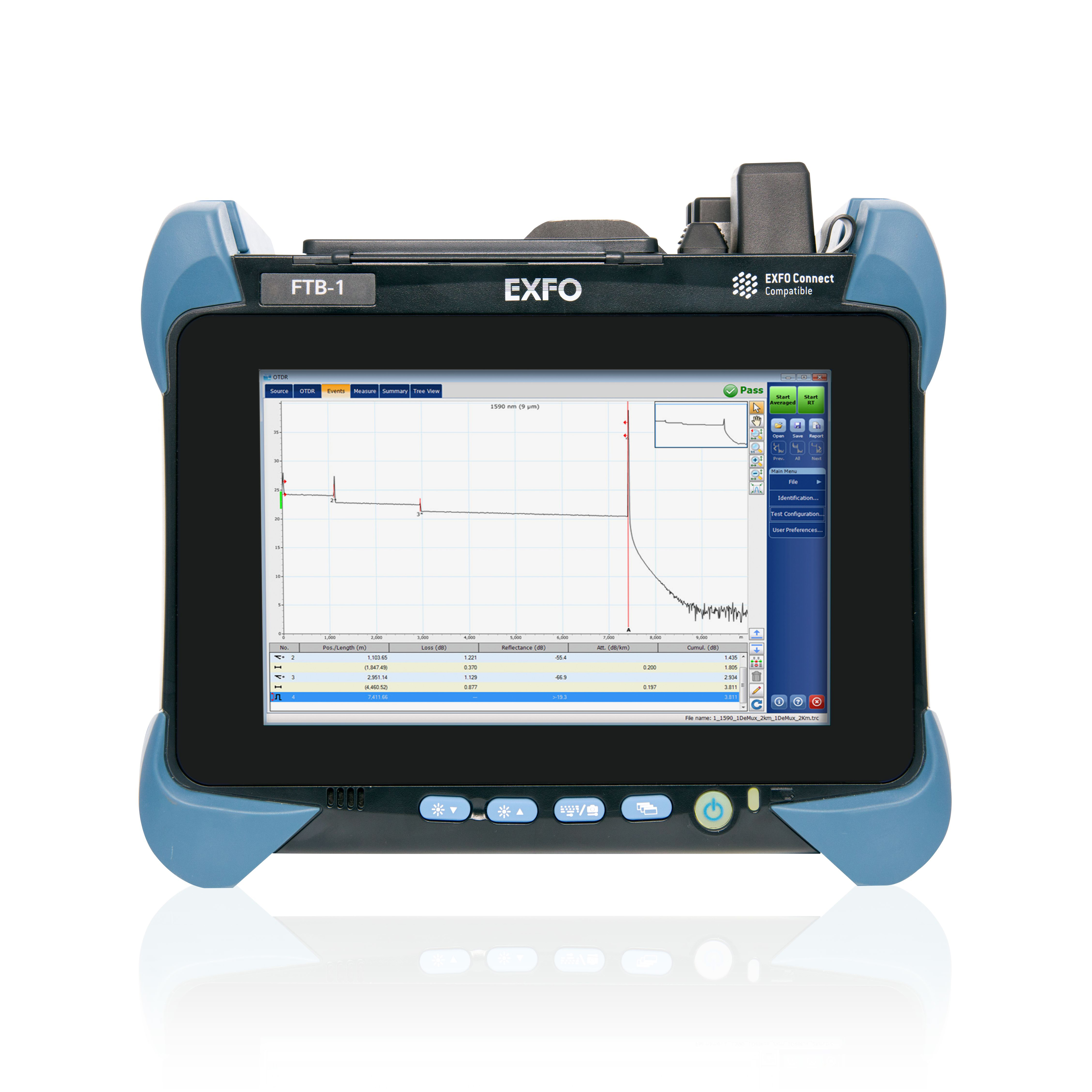Understanding fiber strength and durability through fiber measurement
A Comprehensive Overview to Optical Measurement System for Fiber Evaluation
When it involves fiber evaluation, recognizing optical measurement systems is important for assessing performance and guaranteeing quality. You'll explore important techniques like interferometry and spectroscopy, which aid you gauge vital specifications. However there's more to it than just these approaches; understanding depletion measurement strategies can substantially affect your network's effectiveness. As you browse with this guide, you'll reveal insights that could change your approach to optical fiber.
Comprehending Optical Measurement Systems
When you discover optical measurement systems, you'll uncover they're necessary for evaluating fibers with accuracy. These systems utilize light to analyze different characteristics of fibers, consisting of diameter, refractive index, and harmony. By employing methods like interferometry and spectroscopy, you can gain beneficial insights into the fiber's properties.You'll locate that these systems are developed to minimize errors and boost accuracy, making sure reliable data for your evaluation. Different setups, such as single-mode and multi-mode systems, accommodate specific fiber types, permitting you to choose the finest suitable for your needs.Moreover, the integration of sophisticated software program tools helps you interpret the data efficiently, making it less complicated to identify any type of incongruities or defects. As you examine much deeper right into these dimension systems, you'll value how they improve the logical procedure and boost the total quality of fiber production and testing.
Secret Specifications for Fiber Evaluation
Trick criteria for fiber evaluation play an important function in figuring out the top quality and efficiency of fiber optics. When you examine a fiber, you'll intend to concentrate on features such as depletion, data transfer, and modal diffusion. Depletion determines the loss of signal stamina as light journeys with the fiber. A lower attenuation value indicates far better top quality and longer transmission distances - fibre testing equipment.Bandwidth refers to the data-carrying capability of the fiber and is important for high-speed communication. You'll need to assess the bandwidth to assure it fulfills your application needs. Modal dispersion, which occurs from the different rates at which light trips with various settings in multimode fibers, influences signal clarity
Methods for Attenuation Measurement

Bandwidth and Its Influence On Performance
Recognizing transmission capacity is essential for maximizing fiber performance, as it straight affects the amount of data that can be transferred over a network. Higher transmission capacity implies you can send even more details concurrently, permitting for faster communication and much better total performance. When you're collaborating with optical fibers, it's crucial to consider exactly how transmission capacity interacts with fiber attributes, such as core dimension and material properties.If the data transfer is limited, you might experience information loss or slower rates, impacting your applications. Additionally, various sorts of fibers can support varying transmission capacity degrees, so it is essential to choose the appropriate fiber for your details needs.You should additionally remember that environmental factors, like temperature and outside interference, can affect bandwidth. By understanding these aspects, you can make enlightened decisions to enhance your fiber optic systems, guaranteeing reputable and reliable data transmission.
Refractive Index Measurement Techniques

Overall Interior Representation
Total inner reflection (TIR) functions as a basic concept for determining the refractive index of fibers. When light trips from a denser tool to a less dense one, it can only be totally shown if the angle of occurrence surpasses a certain limit, called the important angle. This phenomenon allows you to figure out the refractive index by analyzing the angles at which light shows or refracts. By utilizing an arrangement that guides light right into a fiber and measures the resulting angles, you can compute the refractive index properly. Understanding TIR not only boosts your fiber analysis yet additionally boosts the design and performance of optical systems. Leveraging TIR can lead to more reliable fiber-based applications.
Interferometric Methods
Building on the concepts of total inner reflection, interferometric methods offer a powerful means for gauging the refractive index of fibers with high accuracy. These approaches exploit the interference patterns developed when beams split and recombine after traveling various courses. You can utilize configurations like the Michelson or Mach-Zehnder interferometer to examine phase shifts triggered by adjustments in refractive index. By thoroughly adjusting your system and analyzing the resulting fringes, you can figure out the refractive index with exceptional precision. It's vital to keep secure environmental conditions to reduce mistakes. With these strategies, you'll improve your understanding of fiber residential properties, resulting in go to this website better efficiency in numerous applications, from telecommunications to sensor modern technology.
Modal Diffusion and Its Importance
Modal dispersion describes the dispersing of light pulses as they take a trip via a fiber, which can affect the overall performance of the system. You'll see that this sensation can cause signal distortion, impacting data transmission rates and top quality. Recognizing its value is vital for maximizing fiber optic styles.
Interpretation of Modal Diffusion
In optical fiber communications, modal diffusion plays a substantial duty in establishing signal high quality and transmission rate. It occurs when different light modes take a trip at differing speeds with the fiber. Given that each setting has distinct paths and qualities, they can get to the obtaining end at different times. This time around difference can cause signal spreading and distortion, which can degrade the overall efficiency of the communication system. You may encounter modal dispersion mainly in multimode fibers, where the numerous courses of light aggravate the problem. Understanding modal dispersion is vital for maximizing fiber layouts and guaranteeing that your communication systems operate effectively, maintaining the integrity of the transmitted signals over longer distances.
Results on Fiber Performance
Comprehending modal dispersion assists highlight its effects on fiber efficiency. This phenomenon occurs when various settings of light traveling at differing rates within navigate to these guys the fiber, resulting in indicate dispersing gradually. As you evaluate fiber optics, you'll notice that enhanced modal dispersion can substantially deteriorate signal top quality, resulting in lowered bandwidth and longer transmission distances. In functional terms, this implies your information can arrive distorted or postponed, affecting general interaction performance. To mitigate these effects, you might take into consideration making use of single-mode fibers, which decrease modal diffusion. By picking the right fiber type and understanding how modal diffusion influences efficiency, you can improve transmission high quality and guarantee trusted information transfer in your optical dimension systems.
Tools and Technologies for Optical Measurements
When it pertains to optical measurements, several innovative tools and modern technologies go to your disposal to boost fiber analysis. You'll discover fiber optic testers, which examine signal quality and performance, vital for preserving ideal network effectiveness. Optical Discover More time-domain reflectometers (OTDRs) are important for situating mistakes and determining loss over distances, supplying comprehensive understandings right into fiber stability. Furthermore, spectrometers can evaluate light ranges, aiding you recognize material properties and composition.Don' t ignore the value of imaging systems, like digital microscopes, that enable you to visually examine fiber surfaces for problems. Additionally, think about using polarization analyzers to gauge anxiety and stress in fibers, which is crucial for comprehending their habits under different conditions. By leveraging these tools and modern technologies, you can greatly boost your fiber evaluation procedures, making sure integrity and high efficiency in your optical networks.
Frequently Asked Concerns
What Are the Expenses Associated With Optical Measurement Equipments?
The expenses related to optical measurement systems can vary substantially. You'll require to review tools costs, upkeep charges, software application licenses, and prospective training costs. Budgeting very carefully will assist you avoid unexpected monetary challenges down the line.

Just How Commonly Should Fiber Evaluation Be Executed?
You must carry out fiber evaluation regularly, commonly every six months or after substantial changes in the atmosphere (fibre testing equipment). This assures ideal efficiency and aids recognize possible problems before they affect your system's performance and integrity
Can Optical Measurement Equipments Be Adjusted at Home?
Yes, you can adjust optical measurement systems in your home, yet it requires precision. Ensure you comply with the supplier's guidelines, utilize suitable calibration standards, and double-check your results to ensure accuracy in your dimensions.
What Industries Frequently Make Use Of Optical Measurement Systems?
You'll locate optical measurement systems widely used in industries such as telecommunications, manufacturing, health care, and study. They're essential for quality assurance, fiber evaluation, and making certain accurate dimensions in different applications, enhancing efficiency and accuracy across markets.
Are There Any Security Worries With Optical Measurement Solutions?
Yes, there are safety worry about optical measurement systems. You should constantly use safety eyeglasses to protect your eyes from intense lights and assurance correct training to manage equipment securely and prevent crashes.